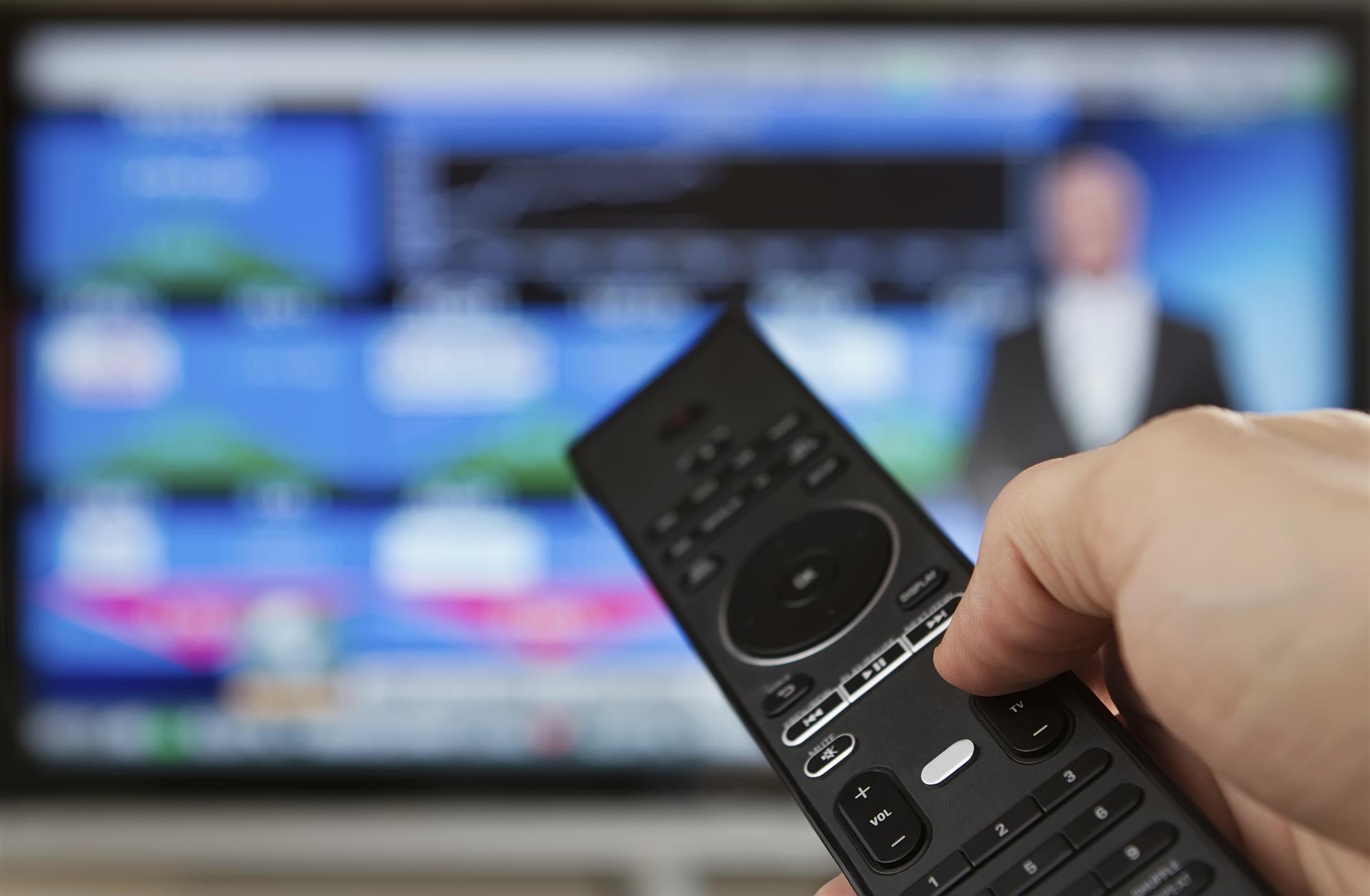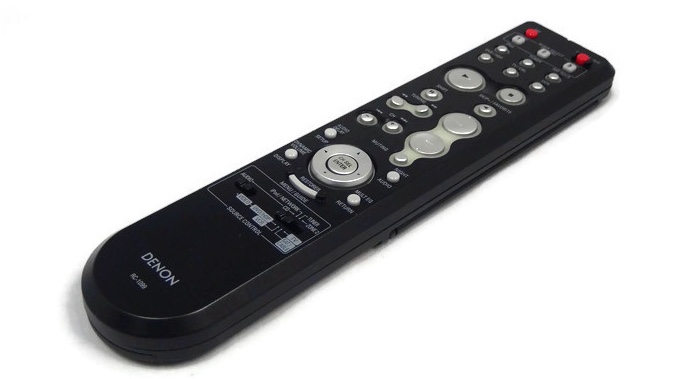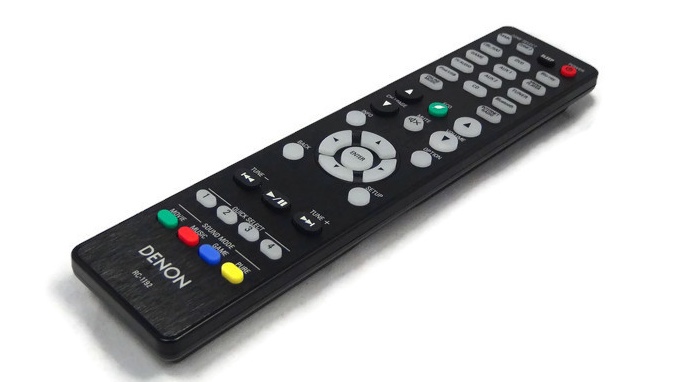If you are in the market for this Denon RC1192 A/V Receiver Remote Control, we have them here in stock at www.ReplacementRemotes.com. This is the brand new OEM remote from Denon, we offer a 60 day warranty and a guaranteed return policy as well. No programming required, just install new batteries and your all set. Call today and make your order, 336 924 8787.
Twitch Grows from Humble Roots to Juggernaut
The livestreaming platform Twitch.tv grew from a spinoff of a general interest video streaming site to an Internet colossus, becoming the fourth largest source of peak Internet traffic in 2014. The platform allows convenient, easy access to video game-related content streamed by individual players, who are increasingly abandoning traditional television and using their game and TV remote controls to check out Twitch.
Visitors to Twitch can watch livestream videos of users playing or talking about videogames and can also interact with them via chat. Commonly viewed content on the site includes e-sports tournaments, gaming talk shows, and personal streams from players.
Twitch started as a content category of justin.tv, an Internet site that allowed anyone to broadcast video online. The video game category quickly became the most popular category, and justin.tv was eventually shut down to allow its founders to focus on Twitch.
A few fast facts about Twitch:
- Twitch was recently acquired by Amazon for $970 million.
- About 76 percent of users are between ages 18 and 49.
- About 68 percent now watch less television to focus on game entertainment online.
- About 58 percent of Twitch users spend 20 hours or more on the site.
Twitch is expected to continue to grow, as demand for gaming entertainment continues its exponential increase.
Replacementremotes.com is a provider of new and refurbished remote controls for a wide variety of televisions and other electronics. In addition to remotes, the company also provides TV stands, accessories, replacement product manuals, lights, and other accessories. The company also operates a repair service for remotes and other devices. To learn more, contact 1-877-671-7173.

PlayStation Vue Adding Channels, Cutting Prices
PlayStation Vue is set to upend how we watch television, allowing access to many sources traditionally only available with a cable television subscription. The new model could be as revolutionary for the industry as the introduction of the remote control.
PlayStation is adding channels to its line up and chopping prices on its Internet-delivered TV packages as it continues to ramp up its services. Sony just added ESPN and various Disney networks to its lineup.
With regard to its price decreases, Sony officials say the price cut along with the addition of new channels is helping to build upon strong momentum the Internet-delivered service already has.
Sony recently cut prices for the three PlayStation Vue plans by $10 each. The 60-channel Access package now costs $39.99 per month. The 75-channel Core package now costs $44.99, and the 100-channel Elite service now costs $54.99.
PlayStation Vue launched last March. It’s not the only Internet-delivered service. Competitors include Dish Network’s Sling TV, and the soon-to-launch DirecTV Now. The television service should help make the top-selling PlayStation 4 console even more popular, as it enables the device to be the go-to for providing both gaming and viewing entertainment.
Replacementremotes.com is a provider of new and refurbished TV remote controls for a wide variety of televisions and other electronics. In addition to remotes, the company also provides TV stands, accessories, replacement product manuals, lights, and other accessories. The company also operates a repair service for remotes and other devices. To learn more, contact 1-877-671-7173.

SAMSUNG AH5902406A Blu-Ray DVD Player Remote Control
If you are in the market for this Samsung AH5902406A Blu Ray DVD Player Remote Control, we have them here in stock at www.ReplacementRemotes.com. This is the brand new OEM remote from Samsung, we offer a 60 day warranty and a guaranteed return policy as well. No programming required, just install new batteries and your all set. Call today and make your order, 336 924 8787.

The Science behind Wireless Technology
Wireless technology has been around for over a hundred years. The invention of this technology was the combination of efforts by several famous scientists, each contributing toward specific areas of electromagnetism and electromagnetic fields. From their contributions came about the inventions of the radio and television. The main concept of wireless is to transmit a signal, data, or other information through the air using electromagnetic waves.
One of the biggest steps toward developing wireless technologies is attributed to James Maxwell, a Scottish physicist, who first theorized the relation between magnetism, electricity, and electromagnetic fields. In fact, these theories are still used today with modern wireless technologies, while they do work slightly differently.
Infrared Technology
Infrared was one of the first wireless technologies developed. It uses infrared beams to transmit information short distances and is very limited. This technology works well in remotes used for TVs, DVD players, stereo systems, garage door openers, and more.
Wi-Fi Technology
This type of wireless technology is able to transmit data at fast speeds in homes and businesses, and even in public areas. As such, it has become the preferred method for accessing the Internet by many people.
Bluetooth Technology
Bluetooth is a wireless technology that works over short distances and allows people the ability to control what types of devices are connected with each other. It does transmit data at fast speeds as found in smartphone, computers, TVs, universal remote controls, video gaming consoles, and other such devices.
4G Technology
4G is the latest wireless technology used with cellular enabled devices. This wireless technology works similarly to how radio and TV signals are transmitted. While the technology has improved, and is reliable for texting and talking, it can still be slower than other wireless technologies when accessing the Internet.
As you can see, our lives have gotten easier, thanks to wireless technologies and remote controls. For universal and remote controls for your electronic devices, call Replacement Remotes now at 1-855-5-REMOTE (1-855-573-6683).
Source:
http://www.itworld.com/article/2802953/mobile/a-brief-history-of-wireless-technology.html

Who Invented the Remote Control?
The concept of the television remote control was conceptualized and patented in the 1890s by Nikola Tesla. During World War I, the Germans developed a remote control they could use to control boats. Since that time, the military application of remote controls has continued to evolve and is still used today.
It was not until the 1930s when the first remote controls were built for consumers. The first wireless, battery operated remotes were developed by Philco and used with their high-end radios. However, the radio remote control did not really make a big impact, since consumers at that time did not mind getting up to turn the radio on or off, change stations, or adjust the volume.
In the 1950s, as more people were getting televisions for their homes, one of the biggest complaints was having to get up and change channels. To address this issue, Zenith started to offer wired remotes with some TV models in the early 1950s. Then, in 1955, Eugene Polley, an engineer for Zenith, developed the first wireless remote control for televisions, aptly named the “Flash-matic.”
Zenith’s wireless remote has continued to evolve and change from the original remote invented in 1955. Today, remotes use infrared, Bluetooth, and other such technologies to control a wide array of products and devices, as well as universal remotes to control multiple devices.
If you require replacement remotes for TV, garage door openers, and other devices, please feel free to contact Replacement Remotes today at 1-855-5-REMOTE (1-855-573-6683).
Sources:
http://science.howstuffworks.com/innovation/repurposed-inventions/history-of-remote-control1.htm
http://inventors.about.com/od/rstartinventions/a/remote_control.htm

DENON RC1104 Audio/Video Receiver Remote Control – www.ReplacementRemotes.com
If you are in the market for this Denon RC1104 A/V Receiver Remote Control, we have them here in stock at www.ReplacementRemotes.com. This is the brand new OEM remote from Denon, we offer a 60 day warranty and a guaranteed return policy as well. No programming required, just install new batteries and your all set. Call today and make your order, 336 924 8787.
SAMSUNG AA5900665A TV Remote Control – www.ReplacementRemotes.com
If you are in the market for this Samsung AA5900665A TV/Keyboard Remote Control, we have them here in stock at www.ReplacementRemotes.com. This is the brand new OEM remote from Samsung, we offer a 60 day warranty and a guaranteed return policy as well. No programming required, just install new batteries and your all set. Call today and make your order, 336 924 8787.

EMERSON 32FNT004 TV Remote Control – www.ReplacementRemotes.com
If you are in the market for this Emerson 32FNT004 TV Remote Control, we have them here in stock at www.ReplacementRemotes.com. This is the brand new OEM remote from Emerson, we offer a 60 day warranty and a guaranteed return policy as well. No programming required, just install new batteries and your all set. Call today and make your order, 336 924 8787.

4 Ways Technology Changed the TV Landscape
TV has undergone many changes since the first black and white sets were sent to market. Here are 4 of the biggest technological changes to TV over the decades:
- Mass production – The first television signals were being broadcast in the 1930s, but the TV didn’t become a common item in American homes until 1948, when mass production began. In 1939, there were less than 1,000 TVs in use. By 1953, there were 25,233,000.
- Cable – The widespread adoption of cable TV in the 70s, 80s, and 90s dramatically expanded the number of channels available to people in their homes and led to the creation of boutique, pay-for-access channels like HBO. The growth of cable also coincided with the start of MTV, which brought a pop culture revolution straight into American living rooms.
- TiVo – In the age of streaming and smart TVs, it’s hard to remember what a dramatic change TiVo was from the TV status quo. Before TiVo, people had to either catch a show right as it aired, or hope that the cassette in their VCR didn’t run out of tape. Suddenly, people had the ability to digitally record shows and store them in perpetuity. Within a few years, they could even record on two channels at once.
- Social media – While sites like Twitter and Facebook didn’t change TV directly, they did change the way people talk about and experience television. Instead of waiting until the next day to talk about a show at work, people can share their reactions to a show as it airs, and potentially reach millions of people in the process.
Need a replacement TV remote? Visit Replacement Remotes today or call 855-5-REMOTE for the best remotes and home entertainment accessories on the market.
Sources

